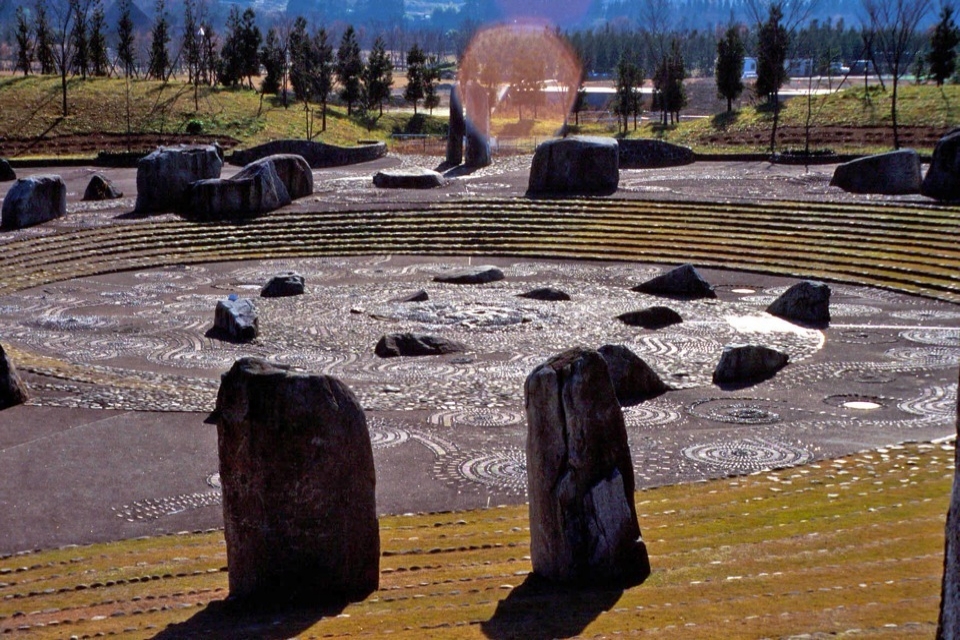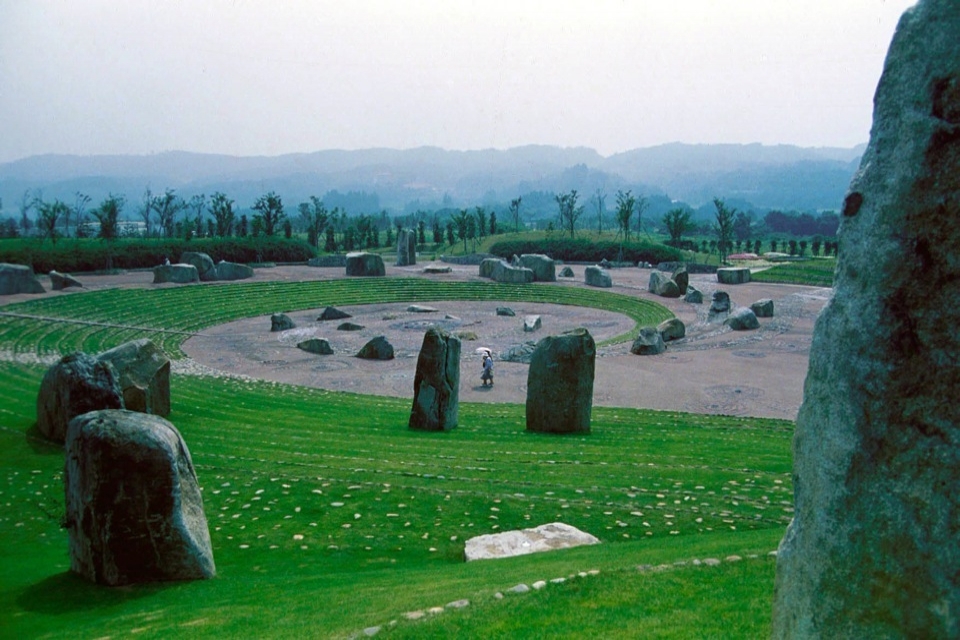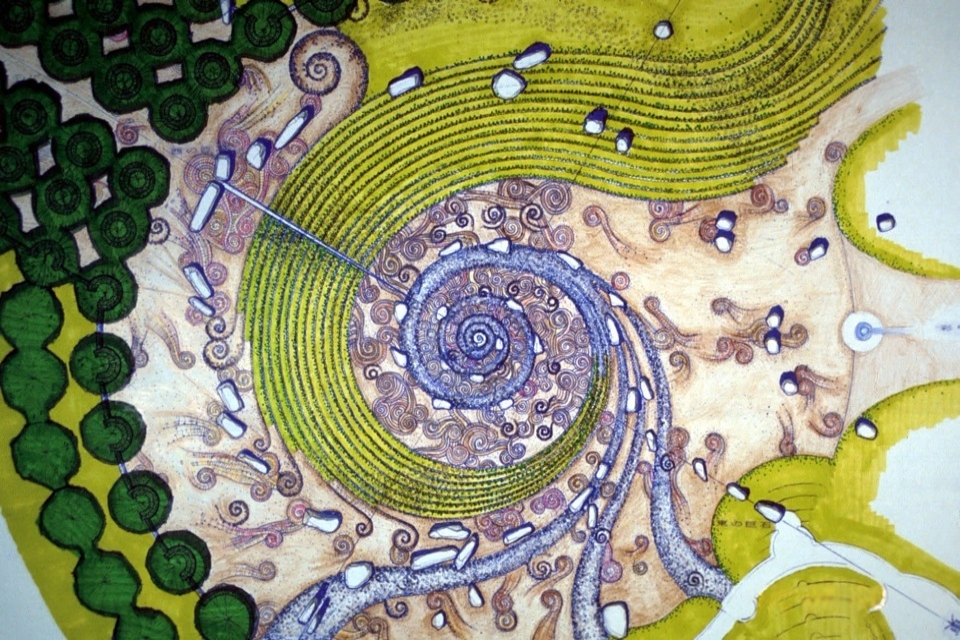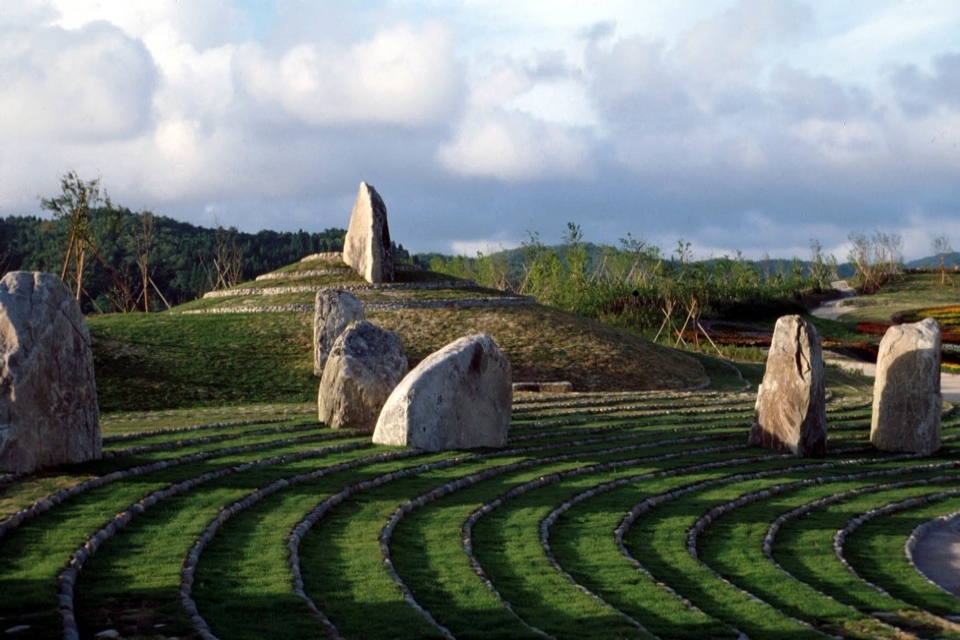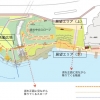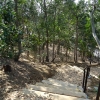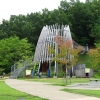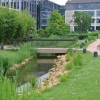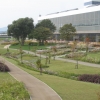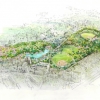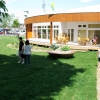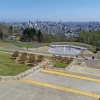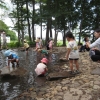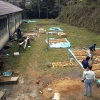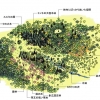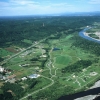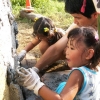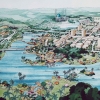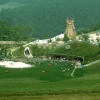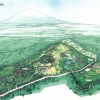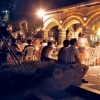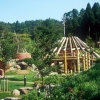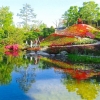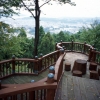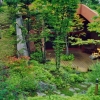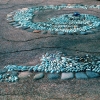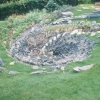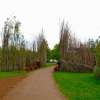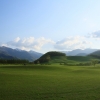Times Square
| Location | Shibata, Miyagi, Japan |
|---|---|
| Work Period | 1979~1982 |
| Size | 321.9ha |
| Client | Construction Ministry |
| Scope of Works | Master Plan, Schematic Design, Detail Design
Construction Management |
A symbol of the area; expression of history and culture
This park is a national government park planned to represent the Tohoku (east-north) territory and we have been involved in designing the master plan. The center plaza was designed to symbolize the history and culture of the area for the opening of the first stage area.
Symbolism, Beech forest belt culture theory, reincarnation, circulation
The cultural heritage of Japan derives from the Jyomon culture and the Yayoi culture which prospered afterward. In west Japan, where forests of evergreen broad leaf trees exist is the land of the Yayoi culture. In east Japan is the tree belt of deciduous broad leaf forest which makes up the Jyomon cultural area.
This park is located in the Tohoku territory which is in the center of this tree belt. The Jyomon cultural motif was employed for the park design.
Moreover, the deciduous forest is the environment that repeats the cycle of life. In spring life buds, it prosper in summer, and then falls, and dies in winter. This cycle has great influence on our view of nature and the world. Megaliths erected at the four directions in the park follows the motion of the sun and the Pole Star. Megaliths stand as a symbol for the spirit of the earth to rise to heaven and the blessing from heaven descend to earth.
One to One Scale
In many cases, design is discussed on paper through drawings in various scales. The things that are drawn in 1/100 or 1/200 scale appear in reality a hundred times or two hundred times smaller in size. We realize that there are things that we could never discover or learn from when seen in such small scales, such as seeing spaces that are missing in details in relation to the human scale. To overcome this gap, we discuss the project not only through drawings but also with models at various scales changing from 1/2500, 1/1000. 1/500, 1/200, 1/100, 1/50, 1/20, 1/10, 1/5 and to 1 to 1 scale, a form closest to the final outcome.
Stand on the site
We stay on the site once construction begins. In order to bring out our design toward actual scale, we discuss the design over models of various scales. The process begins to shape these results on site.
As we live there and spend more time on the site, we experience changing daylight, wind, colors etc. As a result, we can reevaluate the images made through the design process in relation to the actual environment, and thereby enhance the design. By understanding the construction process and its materials, we can also acquire the methods to realize our design.
The process of creating things is a fun, romantic and emotional act. We want to keep this pleasure of sharing feelings in making things with the craftsmen and workers on the site.
Self build
The act of making things is a personal act full of self-expression, happiness and meaning, but it also should be shared with craftsmen working on the site who do the work so that they can share in the joy of creation.





